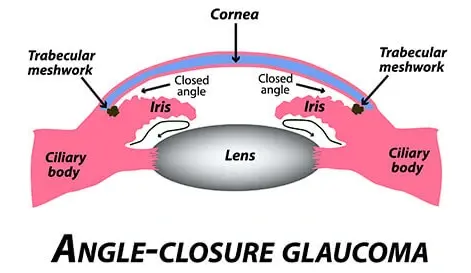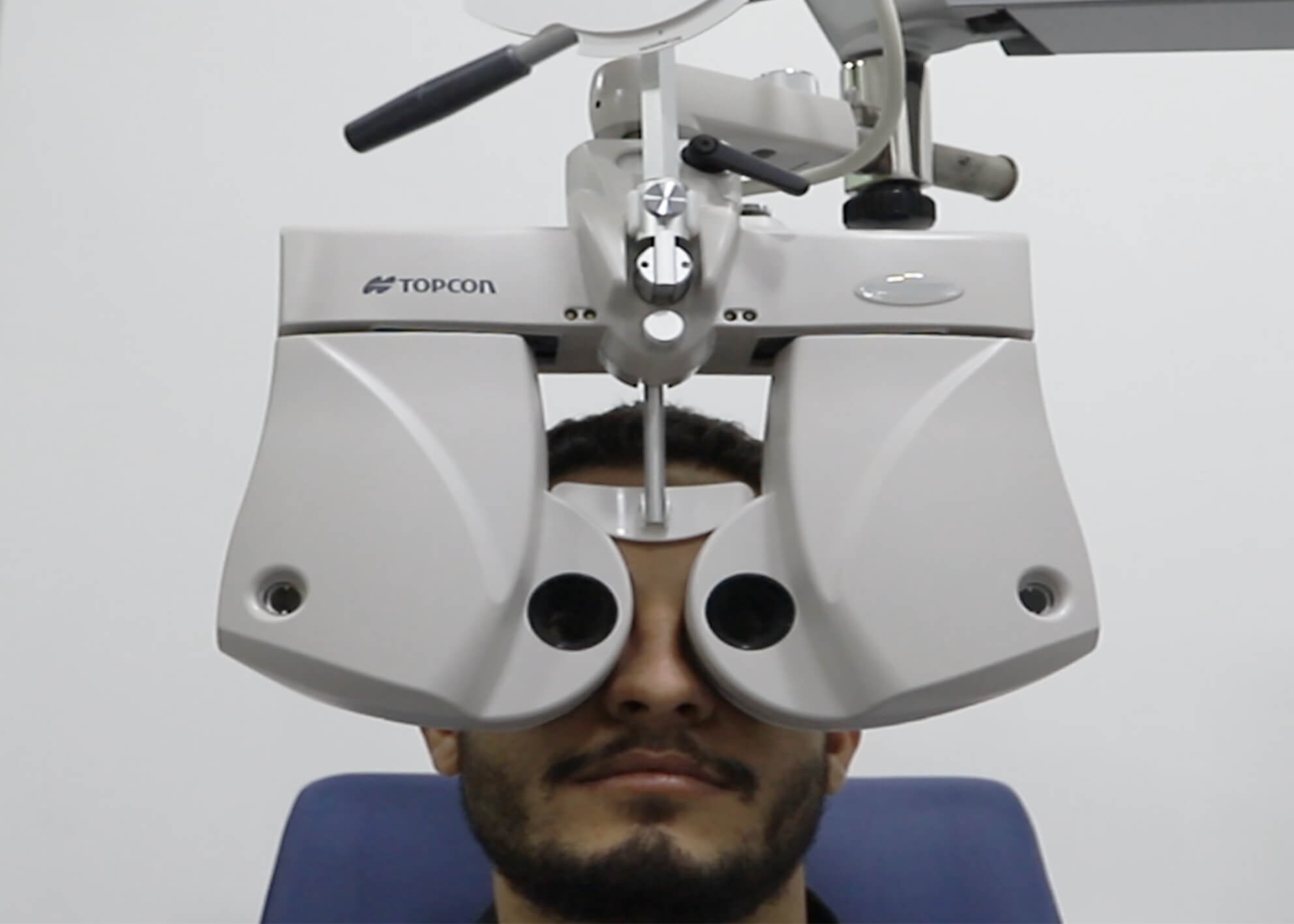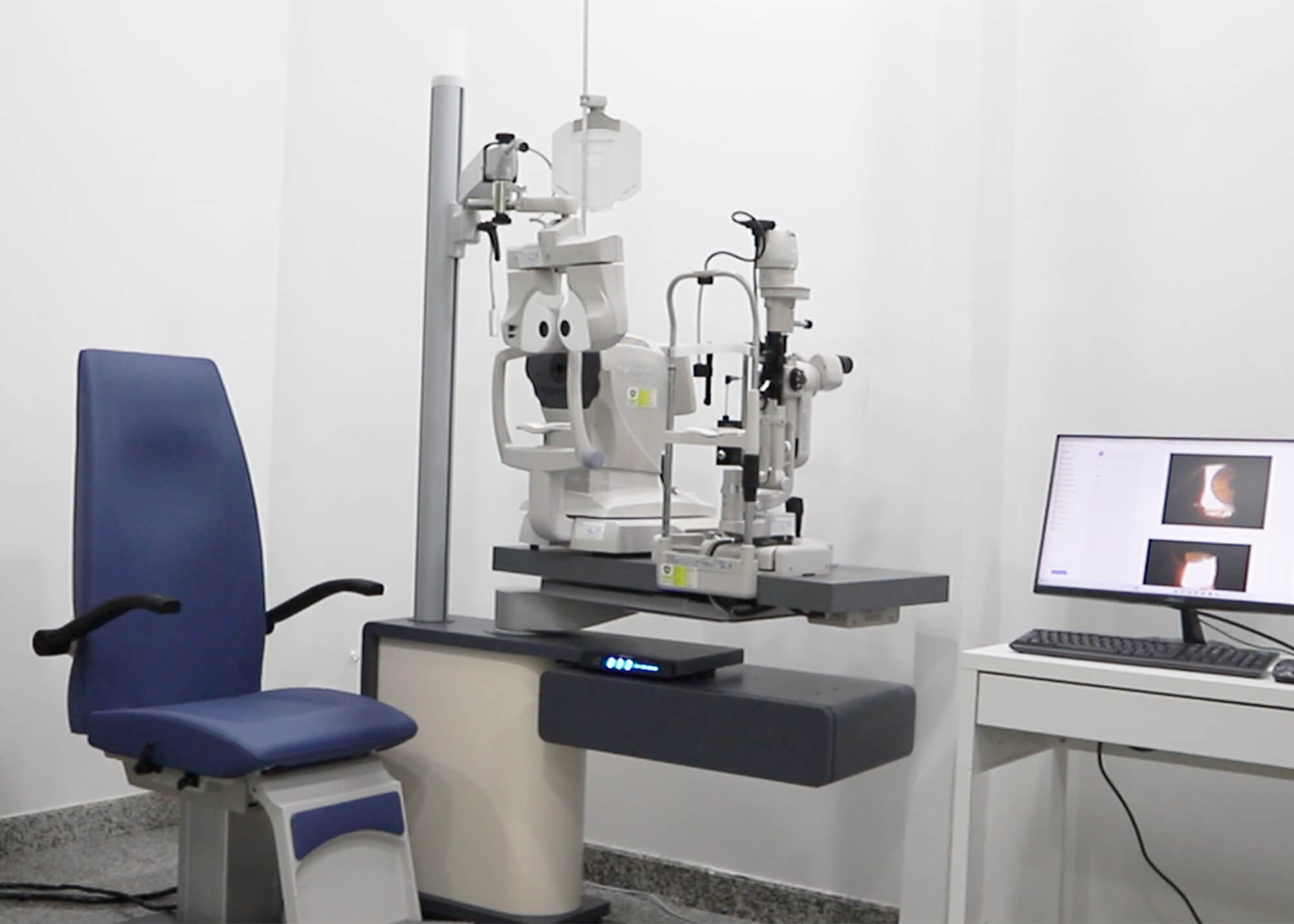Angle-Closure Glaucoma (Closed-Angle Glaucoma) at Eye Clinic DRHC Dubai
Overview
Angle-closure glaucoma, also known as Closed-Angle Glaucoma or Narrow-Angle Glaucoma, is a less common but severe form of glaucoma that occurs when the drainage angle in the eye becomes blocked. This blockage prevents the aqueous humor (fluid in the eye) from draining properly, leading to a rapid increase in intraocular pressure (IOP). If not treated promptly, this can result in significant optic nerve damage and vision loss.
Causes and Risk Factors
Angle-Closure Glaucoma occurs when the iris is pushed or pulled forward, blocking the drainage angle formed by the cornea and iris. This obstruction can be sudden or gradual, and several factors contribute to the condition:
- Anatomical Predisposition: Individuals with naturally narrow drainage angles or smaller eyes are more susceptible.
- Age: The risk increases with age, particularly after 50.
- Gender: Women are more likely to develop Angle-Closure Glaucoma than men.
- Ethnicity: It is more common among people of Asian or Inuit descent.
- Hyperopia (Farsightedness): People with farsightedness are at a higher risk.
- Medications: Certain medications can trigger or worsen the condition by dilating the pupils or affecting fluid drainage.
Symptoms
Angle-Closure Glaucoma can present as either an acute or chronic condition:
- Acute Angle-Closure Glaucoma: This is a medical emergency characterized by a sudden onset of symptoms, including:
- Chronic Angle-Closure Glaucoma: This develops more slowly and may not cause noticeable symptoms until significant damage has occurred. Patients might experience:
- Gradual loss of peripheral vision
- Mild eye discomfort
Immediate medical attention is required if you experience any symptoms of acute Angle-Closure Glaucoma, as prompt treatment is crucial to prevent permanent vision loss.
Diagnosis
At DRHC Dubai, our ophthalmologists use advanced diagnostic techniques to accurately diagnose Angle-Closure Glaucoma:
- Comprehensive Eye Examination: This includes assessing the optic nerve, retina, and other eye structures.
- Gonioscopy: A specialized lens is used to examine the drainage angle and determine if it is narrow or closed.
- Tonometry: Measures the intraocular pressure to detect any elevation.
- Optical Coherence Tomography (OCT): Provides detailed images of the optic nerve and retina, helping to detect early signs of damage.
- Peripheral Iridotomy: A laser procedure used to evaluate the angle structure by creating a small opening in the iris.
Management and Treatment
The goal of treating Angle-Closure Glaucoma is to lower intraocular pressure and prevent further optic nerve damage. At DRHC Dubai, we offer a range of treatment options tailored to each patient’s specific needs:
- Medications: Eye drops and oral medications may be prescribed to lower IOP and reduce fluid buildup in the eye.
- Laser Peripheral Iridotomy: A common procedure for treating Angle-Closure Glaucoma, where a small hole is created in the iris using a laser to allow fluid to drain more effectively.
- Surgical Intervention: In some cases, surgery may be necessary to create a new drainage pathway or remove part of the iris to prevent angle closure.
- Ongoing Monitoring: Regular follow-up appointments are essential to monitor IOP and ensure the condition is managed effectively.
Why Choose DRHC Dubai?
At DRHC Dubai, we provide expert care for patients with Angle-Closure Glaucoma. Our team of experienced ophthalmologists utilizes the latest diagnostic tools and treatment options to manage this condition effectively. We are committed to offering personalized care, patient education, and regular monitoring to ensure the best possible outcomes.
.png?width=281&height=59&name=bookanappointment%20(1).png)
At Dr. Rami Hamed Center, our Ophthalmology department is dedicated to safeguarding your vision health through expert eye care Professionals, Renowned as one of the best eye care clinics in Dubai our Ophthalmology Specialists provide services for Cataract and Retina treatment with Laser and Refractive surgeries.




.png?width=281&height=59&name=bookanappointment%20(1).png)






